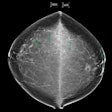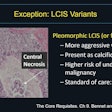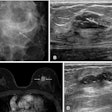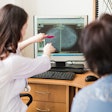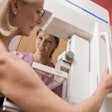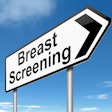For most women, the risk of radiation-induced breast cancer due to digital mammography screening is low. But women with large breasts often undergo extra screening views and therefore do have an increased risk, according to a study published online in the Annals of Internal Medicine.
Researchers used simulation models to determine the lifetime risk of women developing radiation-induced breast cancer from digital screening mammography -- and dying from the disease -- compared with the number of breast cancer deaths prevented by early detection. The models were based on data from the Breast Cancer Surveillance Consortium and the American College of Radiology Imaging Network (ACRIN) Digital Mammographic Imaging Screening Trial (DMIST) (Ann Int Med, January 12, 2016).
The group, led by Diana Miglioretti, PhD, of the University of California, Davis, found that biennial screening of 100,000 women from ages 50 to 74 prevented 627 deaths. The radiation exposure from these screening exams and any subsequent diagnostic workups can cause 27 breast cancer cases and four breast cancer deaths. Annual screening of women starting from age 40 increased these risks fivefold, leading to 100 additional radiation-induced breast cancers and 12 additional breast cancer deaths, compared with biennial screening from ages 50 to 74.
Women with large breasts received 2.3 times more radiation than women with smaller breasts, putting them at risk for approximately 57 cases of breast cancer and 10 radiation-induced breast cancer deaths per 100,000 women screened biennially, ages 50 to 74.
New technologies such as devices with larger detectors or digital breast tomosynthesis -- used with synthetic 2D views -- could mitigate this increased risk for women with large breasts, according to the researchers.
"For the average woman, having an additional workup for an abnormal screening result offers very small additional radiation exposure," Miglioretti said in a statement released by the University of California, Davis. "But for some women who have additional mammography views and an image-guided biopsy, the additional workup can account for a quarter of their annual radiation exposure from mammography."













